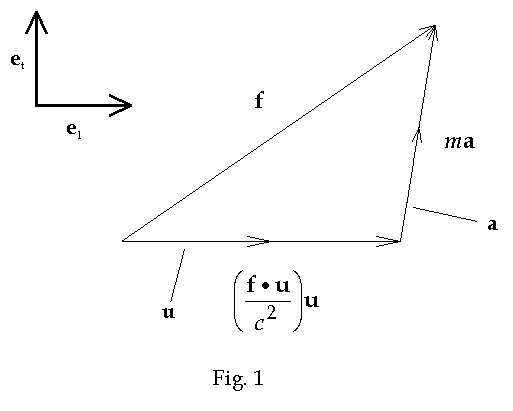Longitudinal
and Transverse Mass
Back
to Physics World
Back to Special Relativity
The
force on a relativistic particle is given by
![]()
m
º gm0
is the mass of the particle where m0
is the rest mass is. The particle’s mass is related to particle’s kinetic
energy, K, by
![]()
If the
particle’s rest m0
is constant then differentiating Eq. (2) with respect to time gives
![]()
According
to the work-energy theorem the time rate of change of the particle’s kinetic
energy is dot product of force and velocity, i.e.
![]()
Therefore
the time rate of change of the particle’s mass is given by
![]()
Substituting
into Eq. (1) yields

Eq. (6)
shows that the force, acceleration and velocity vectors are co-planar. See Figure
1 below

The
force and acceleration may therefore be resolved into components parallel and
transverse to the direction of motion, i.e. into components parallel and
transverse to u. The transverse component will lie in the plane of the
three vectors as shown in Fig. 1. In terms of unit vectors parallel and
transverse to u = uel
as shown in Fig. 1, the force and acceleration become
![]()
![]()
Substitute
Eq. (7) and (8) into Eq. (6) to obtain

Since el
and et
are linearly independent we can equate the components. We directly obtain the
transverse component as
![]()
Equate
the longitudinal component and solve for the transverse force

Summary

where

The
force may now be expressed as
![]()